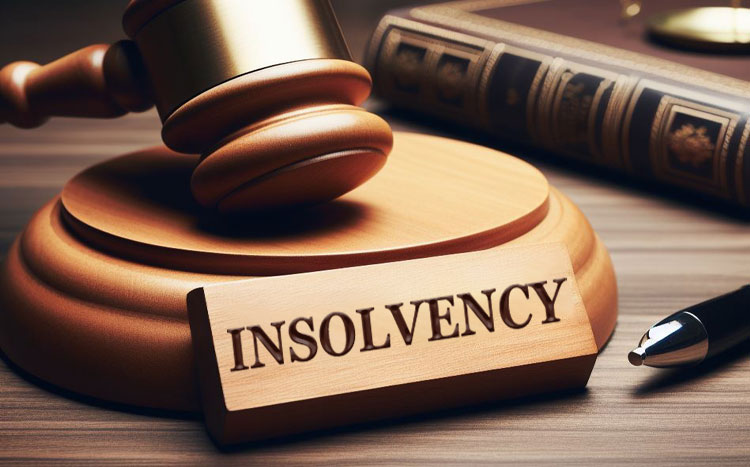A class action lawsuit is a legal procedure that allows a group of individuals collectively to bring a claim to court. This type of lawsuit is significant as it enables affected parties to unite their claims, often for various types of damages or grievances against a defendant, typically a corporation or organization. Such consolidated efforts help streamline the judicial process and can lead to more efficient resolution of similar claims.
In this article, we will explore the fundamental aspects of class action lawsuits, including their definitions, history, processes, and future implications. Understanding these elements can provide a clearer vision of how justice is sought on a larger scale.
Defining a Class Action Lawsuit
A class action lawsuit is defined as a civil lawsuit filed by one or several plaintiffs on behalf of a larger group of people who are affected by the same issue or grievance. This group, known as the “class,” typically shares common legal or factual claims. Class action lawsuits can arise from various causes, including but not limited to consumer fraud, discrimination, environmental disasters, or product liability cases.
One of the main purposes of class actions is to ensure that individuals who might have limited resources to pursue individual lawsuits can still seek justice. By consolidating multiple cases, the legal system can more effectively manage cases and provide higher chances for people to receive compensation for their claims. This is particularly important in instances where the damages suffered by each individual may be relatively small, making individual lawsuits impractical or economically unfeasible. In such scenarios, a class action can serve as a powerful tool to hold corporations or entities accountable for their actions.
Additionally, class actions can also serve a broader societal purpose by addressing systemic issues that affect large groups of people. For example, when a corporation engages in deceptive marketing practices that impact thousands of consumers, a class action can not only provide restitution to those harmed but also deter similar behavior in the future. This collective approach to litigation can lead to significant changes in corporate policies and practices, promoting fairness and accountability in the marketplace.
The Legal Framework of Class Action Lawsuits
The legal framework of class action lawsuits varies from one jurisdiction to another, but many countries, including the United States, have established specific rules governing these types of cases. In the U.S., class actions are primarily governed by Rule 23 of the Federal Rules of Civil Procedure, which outlines the requirements for certifying a class and the rights of class members.
This framework includes provisions for the certification process, notice to class members, settlement options, and appeals. Typically, a court must approve the class action status before it can proceed, ensuring that the claims are sufficiently similar and that class representation will adequately protect the interests of all parties involved. The court’s role is crucial in maintaining the integrity of the process, as it must assess whether the class representatives are adequate and whether the common questions of law or fact predominate over individual issues.
Moreover, the certification process can be a battleground in itself, as defendants often challenge the formation of a class, arguing that the claims are too diverse or that the representative parties do not adequately represent the interests of the entire group. This aspect of class action lawsuits underscores the importance of thorough legal representation and the strategic considerations involved in pursuing such a case.
Key Terms in Class Action Lawsuits
Several essential terms are commonly associated with class action lawsuits. Understanding these terms can provide clarity as one navigates the complexities of such legal actions. Key terms include:
- Class Representative: The individual(s) who represent the interests of the class and lead the lawsuit.
- Class Certification: The court’s formal approval that allows the case to proceed as a class action.
- Opt-In/Opt-Out: Procedures that allow class members to choose whether to participate in the lawsuit or to exclude themselves from it.
- Settlement: An agreement reached between the parties involved to resolve the lawsuit, often resulting in compensation for the class.
These terms play a critical role in the success and understanding of class action lawsuits, providing a foundation for the legal proceedings that follow. Additionally, the implications of these terms can have far-reaching effects on the rights of individuals within the class. For instance, the opt-out mechanism is particularly significant, as it allows individuals who may not agree with the direction of the lawsuit or the proposed settlement to protect their right to pursue their claims independently. This choice can be pivotal for those who believe their specific circumstances may not be adequately addressed within the broader class action framework.
Furthermore, understanding the nuances of settlements is essential, as they can vary widely in terms of compensation and the obligations imposed on the defendant. Some settlements may include monetary compensation, while others might require changes in business practices or policies, reflecting a commitment to prevent future harm. The negotiation process leading to a settlement can be complex and often involves significant legal maneuvering, highlighting the importance of skilled legal counsel in navigating these waters.
The Origins and History of Class Action Lawsuits
The origins of class action lawsuits can be traced back many years, with roots in common law traditions. Initially, class actions emerged as a means to address grievances shared by groups of individuals who faced similar injustices, allowing them to band together and challenge larger and more powerful defendants.
Over time, this form of legal action gained traction, particularly in the United States, where the civil rights movement and consumer protection laws in the 1960s and 1970s served as catalysts for more widespread use of class actions.
Class Action Lawsuits in the United States
In the United States, the proliferation of class action lawsuits can be linked to landmark cases that highlighted the need for collective legal action. One notable example is the case of Brown v. Board of Education, which exemplified the power of group litigation in addressing systemic injustices.
Legislation, such as the Class Action Fairness Act of 2005, has since shaped the landscape of class action lawsuits, aiming to ensure fairness for all parties involved and to prevent misuse of the class action mechanism. As a result, class action lawsuits have become an increasingly important tool for individuals seeking justice against corporations and institutions.

Global Perspective on Class Action Lawsuits
While class action lawsuits are well known in the United States, they exist in various forms around the world. Many countries have adopted similar group litigation models to allow individuals to seek redress for collective grievances. For instance, Canada uses a framework called “class proceedings,” which functions similarly to class actions in the U.S.
In Europe, the landscape is evolving, with the European Union advocating for collective redress mechanisms to empower consumers. Countries like the UK have also introduced their version of class actions with varying degrees of success and acceptance among the public.
The Process of a Class Action Lawsuit
The process of initiating a class action lawsuit involves several steps, starting with the identification of a suitable case that impacts a considerable number of individuals. This often requires extensive legal research and understanding of the underlying issues that bind the potential class members together.
Once a case has been identified, the next steps involve filing for class certification, which is crucial for the court to officially recognize the group as a class. After achieving certification, the lawsuit progresses through various stages, often culminating in settlement negotiations or a trial.
Initiating a Class Action Lawsuit
To initiate a class action lawsuit, the class representative must file a complaint in the appropriate court outlining the claims and legal bases for the action. The complaint should specify the size of the class, the commonality of claims, and the reasons why a class action is the most suitable method for resolving the issues at hand.
The court will then conduct a hearing to determine if the class meets the necessary criteria for certification, including numerosity, commonality, typicality, and adequacy of representation.
The Role of the Lead Plaintiff
The lead plaintiff, often referred to as the class representative, plays a critical role in the class action process. This individual is responsible for representing the interests of all class members and making strategic decisions for the litigation.
The lead plaintiff must fairly and adequately represent the class while working alongside experienced legal counsel. Their commitment and understanding of the case influence the overall success of the lawsuit and, ultimately, the outcomes for all affected individuals.
Settlement and Distribution of Funds
A significant portion of class action lawsuits ends in settlements rather than trials. Settlements can provide faster resolutions for class members and help avoid the uncertainties and expenses associated with trial proceedings.
Once a settlement is reached, the funds must be distributed fairly among class members, often requiring the court’s approval. The distribution process can involve creating a claims process, where class members submit claims to verify their eligibility for compensation, ensuring transparency and accountability.
Pros and Cons of Class Action Lawsuits
As with any legal mechanism, class action lawsuits come with their own set of advantages and disadvantages. Assessing these factors is crucial for potential plaintiffs considering a class action as a course of action.
Benefits of Class Action Lawsuits
Class action lawsuits can offer several benefits. First and foremost, they provide individuals the opportunity to consolidate their claims, reducing the financial burden of pursuing individual lawsuits. This means that even those with smaller claims can seek justice that may otherwise be financially unfeasible.
Additionally, class action lawsuits can create a more balanced legal playing field, especially when individuals are up against larger corporations that might otherwise evade accountability through power and resources. The collective nature of these lawsuits can amplify pressures on defendants, leading to fairer outcomes.
Criticisms and Drawbacks of Class Action Lawsuits
Despite their benefits, class action lawsuits are not without criticisms. One common concern is that settlements can be disproportionately favorable to attorneys, who may receive substantial fees while class members receive minimal compensation. This raises ethical questions about representation and accountability.
Another issue is the time and complexity associated with class action lawsuits. The certification process can be lengthy and may discourage some potential claimants from pursuing their claims. Furthermore, not all claims are certified, leading to frustrations among class members who may wish to separate their claims from group actions.
See Also : Current Class Actions in Australia: How They Impact Individuals
The Future of Class Action Lawsuits
The future of class action lawsuits is still being shaped by trends in litigation, consumer protection, and changes in technology. As society increasingly becomes aware of collective rights, the demand for effective and efficient means of seeking justice is expected to grow.
Legal reforms may further impact the landscape, as lawmakers continuously assess the mechanisms in place to protect consumers and efficiently handle class actions.
Emerging Trends in Class Action Lawsuits
Emerging trends indicate a shift toward more technology-enabled litigation strategies. The rise of online platforms for filing and processing claims signifies a move toward enhancing accessibility and simplifying complex procedures.
Moreover, increased awareness of social justice issues may lead to a rise in class action lawsuits related to environmental concerns, data breaches, and corporate accountability in a rapidly changing world.

The Impact of Technology on Class Action Lawsuits
Technology is expected to play an increasingly pivotal role in shaping class action lawsuits. From data analytics used to assess claims to digital platforms enabling efficient communication among class members, the influence of technology is transforming traditional processes.
Moreover, advancements in artificial intelligence and machine learning may further streamline litigation strategies, making it easier to analyze case outcomes and advise potential plaintiffs on whether to pursue class action status.
In conclusion, class action lawsuits represent a vital mechanism for collective legal action, addressing grievances shared among numerous individuals. Understanding the nuances, processes, and potential outcomes of these lawsuits is essential for anyone considering that their rights may be infringed upon. As society evolves, class actions will likely adapt to meet the changing landscape of justice and accountability.







